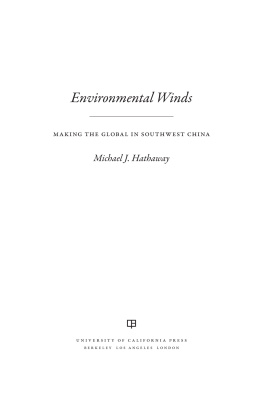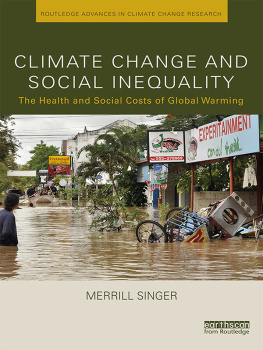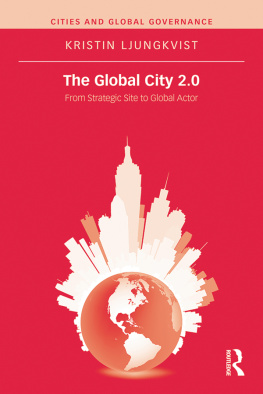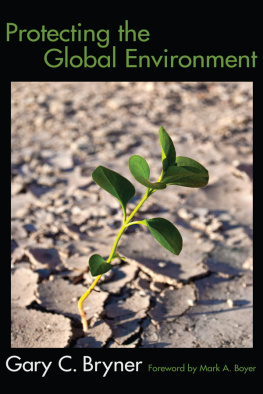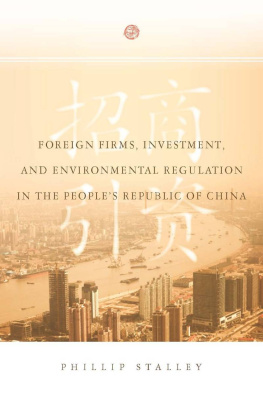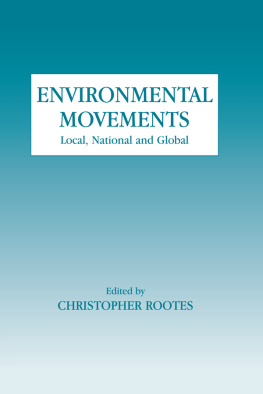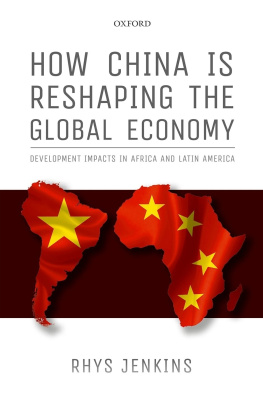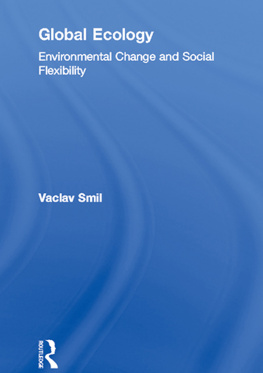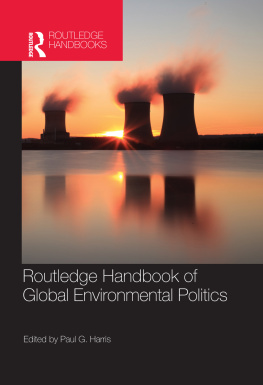
Environmental Winds
Environmental Winds
MAKING THE GLOBAL IN SOUTHWEST CHINA
Michael J. Hathaway

UNIVERSITY OF CALIFORNIA PRESS
BERKELEYLOS ANGELESLONDON
University of California Press, one of the most distinguished university presses in the United States, enriches lives around the world by advancing scholarship in the humanities, social sciences, and natural sciences. Its activities are supported by the UC Press Foundation and by philanthropic contributions from individuals and institutions. For more information, visit www.ucpress.edu.
University of California Press
Berkeley and Los Angeles, California
University of California Press, Ltd.
London, England
2013 by The Regents of the University of California
Cataloging-in-Publication Data is on file with the Library of Congress.
ISBN 978-0-520-27619-2ISBN 978-0-520-27620-8
eISBN 9780520956766
Manufactured in the United States of America
22 21 20 19 18 17 16 15 14 13
10 9 8 7 6 5 4 3 2 1
In keeping with a commitment to support environmentally responsible and sustainable printing practices, UC Press has printed this book on Rolland Enviro100, a 100% post-consumer fiber paper that is FSC certified, deinked, processed chlorine-free, and manufactured with renewable biogas energy. It is acid-free and EcoLogo certified.
CONTENTS
ILLUSTRATIONS
ACKNOWLEDGMENTS
Foremost, I would like to thank all of the many people I met in China, especially those who took care of my family in Xiao Long. I would also like to recognize my many friends and colleagues, some of whom have since passed away, that have worked, in various ways, to connect a love of the natural world with support for social justice in a challenging social context. This includes particular thanks to innovative pathbreakers such as Pei Shengji, Xu Jianchu, and Yu Xiaogang.
Among my network of close friends in Kunming and beyond, I would also like to extend thanks for warmth, support, and insight to Ulrich Apel, Graham Bullock, Cao Guangxia, Jim Harkness, Craig Kirkpatrick, Joseph Margraf, Nick Menzies, Min Guo, Bob Moseley, Ed Norton, Willem Quist, Tian Shitao, Vicky Yanzhen Tian, Jeannette van Rijsoort, Dan Viederman, Wu Deyou, Olivia Xue Hui, Xue Jiarong, Xue Jiru, Yang Bilun, Yang Yuancheng, Yang Yuming, David Young, Nick Young, Zhang Lianmin, Zhou Dequn, Yang Haiyu, Zhai Wen, and Zhang Hai. In the field Lu Wenhong, Yang Xueqing, and Zhang Hai provided dedicated and creative support.
During my doctoral studies at the University of Michigan, I relied greatly on my committee members. I am deeply grateful to Arun Agrawal, Gillian Feeley-Harnik, Conrad Kottak, Erik Mueggler, and Anna Tsing, for both pushing me and allowing me space to come up with something different.
My manuscript reviewers, among them Vanessa Fong and Anna Lora-Wainwright, pointed out gaps and encouraged me to strive for greater clarity of argument.
I benefited from excellent research assistance from a team of bright graduate students at Simon Fraser University: Karen-Marie Elah Perry, Grace Hua Zhang, Bardia Khaledi, and Dalia Vukmirovich. I would also like to extend my thanks for wonderful library support from Moninder Bubber, Rebecca Dowson, and Sonny Wong.
My studies of the links between China and the North American feminist movement were helped by Duke University archivist Kelly Wooten and student Michelle Lee. At the University of Michigans Labadie Collection, Julie Herrada provided assistance. I relied on scholarship and advice from Carol Hanisch and Alice Nichols for help in understanding how these dynamic social worlds came together.
Much thanks to Judy Brandon for allowing her wonderful artwork to grace the cover of this book. I also appreciate Tom Dusenberry for permission to reproduce his photos of Yu Xiaogang, Julian Calder for allowing me to reproduce his photos of Prince Philip, David Young for allowing me to reproduce his image from a social forestry class in Kunming in 1995, Marisa Figueiredo of Redstockings for her assistance in finding images, Cathy Cade for helping me obtain permission for her photographs, and Charles Santiapillai for his photos of WWFs first elephant projects. I was lucky to work with a number of fantastic people at the University of California Press, who shepherded the manuscript through with efficiency and enthusiasm, especially Reed Malcolm and Stacy Eisenstark. In the final stages, the manuscript benefitted from the sharp eyes of Judith Hoover and Barbara Kamienski.
Feedback from audiences at the University of Wisconsin (Madison), University of Michigan (Ann Arbor), as well as several meetings of the American Anthropological Association, Association of Asian Studies, and the Society of Environmental History gave me new insights and approaches to this study. I also acknowledge generous support for this project from the National Science Foundation, U.S. Environmental Protection Agency, Social Science Research Council, Social Sciences and Humanities Research Council, Wenner-Gren Foundation, University of Michigan, and Simon Fraser University.
I am grateful for all of the helpful criticism and tough love and assistance from a wonderful group of scholars and friends: Bonnie Adrian, Nicole Berry, Alexia Bloch, Jeremy Brown, Kim Clum, Anita Crofts, Dara Culhane, Susan Erikson, Fa-ti Fan, Kim and Mike Fortun, Paul B. Garrett, Karen Hbert, Dorothy Hodgson, Milind Kalikar, Christina Kelly, Jake Kosek, Ralph Litzinger, Celia Lowe, Renisa Mawani, Emily McKee, Ed Murphy, Nancy Peluso, Ivette Perfecto, Stacy Pigg, Deanna Reder, Shiho Satsuka, Sigrid Schmalzer, Richard Schroeder, Elena Songster, Janet Sturgeon, Hannah Wittman, and Lingling Zhao. I would especially like to thank five people who were critical to making this book a reality: Juliet Erazo, Mel Johnson, Genese Sodikoff, Anna Tsing, and Kathy White. My parents, Walton and Peggy Hathaway, have helped in more ways than they know, instilling in me a deep love of the natural world and a strong sense of social justice. My biggest thanks, however, go to my family. The sharp wit of my son, Walker Hathaway-Williams, has helped me to navigate China, the United States, and Canada with much insight and laughter. My daughter, Logan Hathaway-Williams, has been a joy, and I look forward to bringing her to meet friends in China one day. Most of all, I thank Leslie Walker Williams, who has always been my sharpest critic and most generous supporter, the best partner in life I could ever imagine.
Earlier versions of several of these chapters have appeared in previous publications. Chapter 2 appeared as Global Environmental Encounters in Southwest China: Fleeting Intersections and Transnational Work in The Journal of Asian Studies 69:2 (2010): 427451. Chapter 4 appeared as The Emergence of Indigeneity: Public Intellectuals and an Indigenous Space in Southwest China in Cultural Anthropology 25:2 (2010): 301333.
Introduction
IN THE SUMMER OF 1995, in an old greenhouse in the dry hills above Santa Cruz, California, a chance meeting would inextricably pull me into the world of environmentalism in China. My admiration of a rare orchid with delicate purple petals and intricate designs led to a conversation with a man named Karl Bareis, who told me that this specimen was brought from Southwest China to France in the late 1800s. I knew a bit already about Bareis, a renaissance man fluent in Japanese, a bamboo expert, and a cultivator of rare tropical fruit, and I was interested to learn that he himself had just returned from this region, along Chinas remote mountainous borders with Myanmar and Vietnam, on an ethnobotanical expedition. I had just finished my undergraduate thesis on global environmental politics in the Brazilian Amazon and was trying to find work in China. My wife, who had lived in Nanjing for a year during the mid-1980s, was eager to return to China. I too was deeply curious about actually existing socialism in China and what impact, if any, global environmentalism was having there.
Next page
